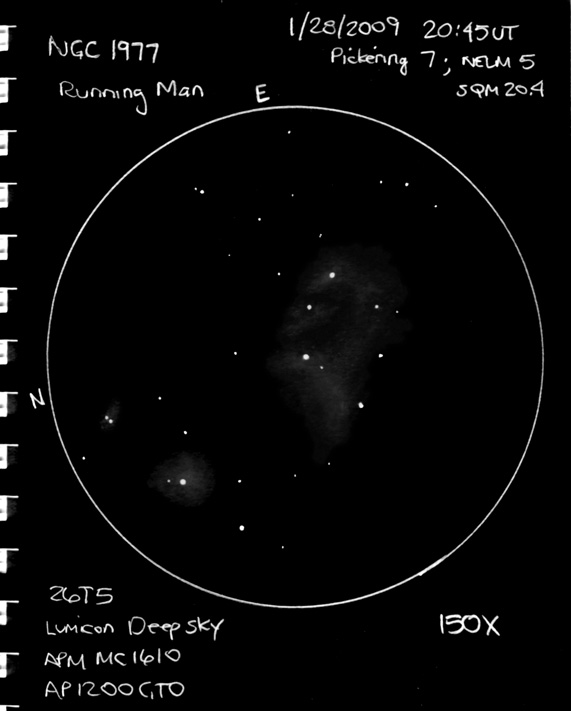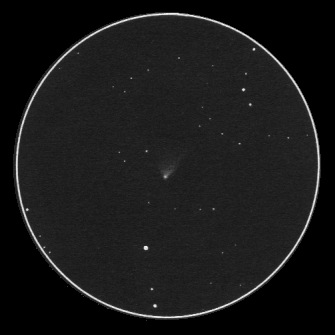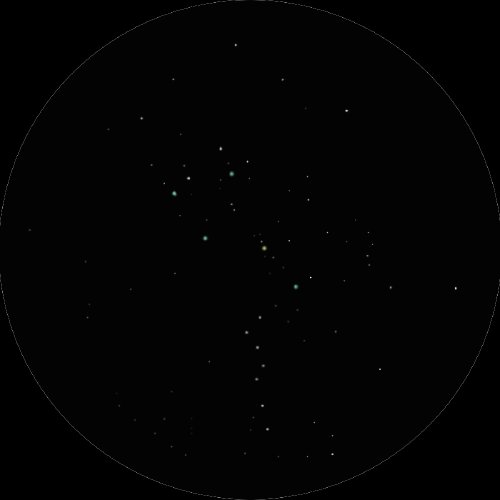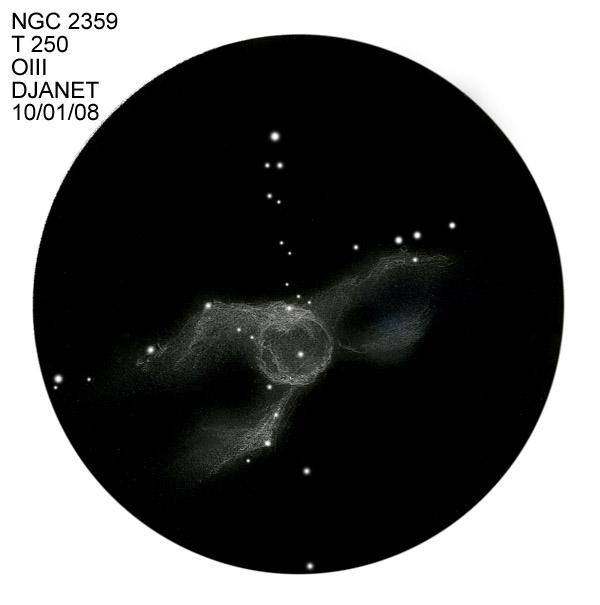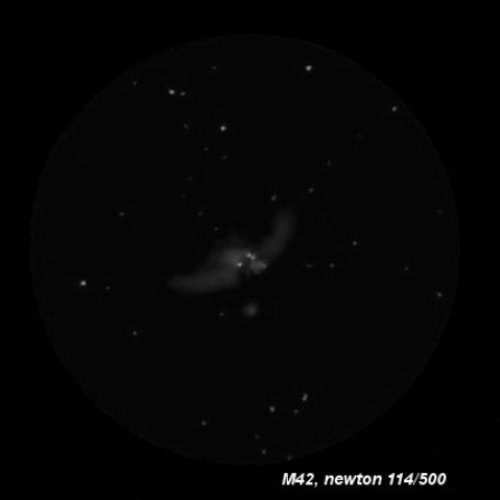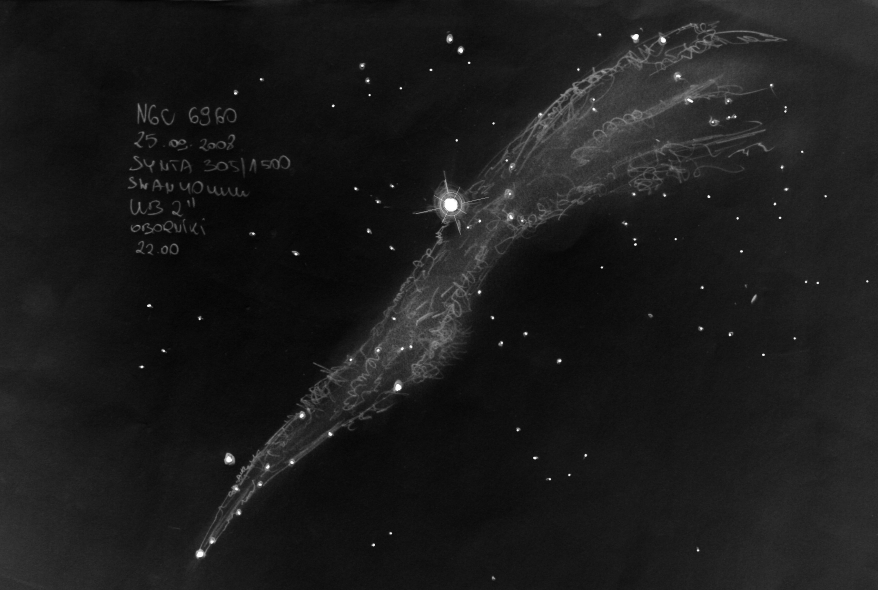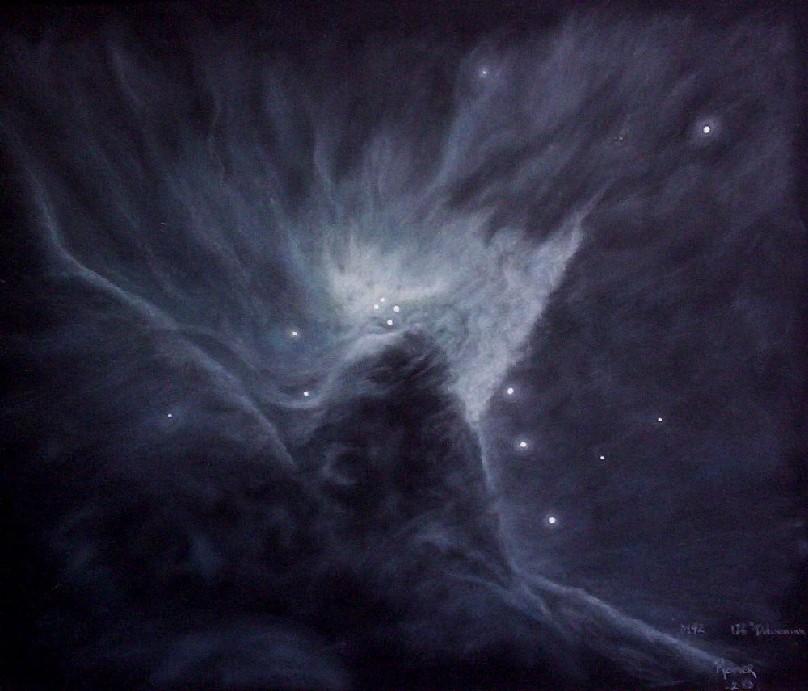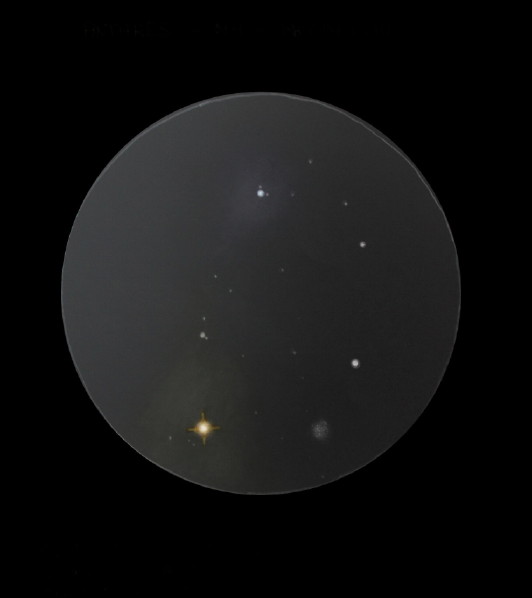
Rho-Ophiuchi, Antares and M4
Sketch and Details by Leonor Ana Hernández
The view through the binocular was splendid, Antares highlighted with an intense orange and was surrounded by a diffuse cloud, visible with averted vision.
The field was rich, plenty of stars, I distinguished perfectly the cluster M4 as a round nebula of grey cotton. Rho Ophiuchi showed flirt in the upper zone with its three components forming the shape of Mickey Mouse… with a blue intense color. The nebula around Antares appeared to reach Rho Ophiuchi indirectly.
Site : Mazarambroz, Toledo (Spain)
Date : June 20, 2009
Time : 21.53 UT
Binoculars : Vixen 12×80
FOV: 4.2°
Sky brightness : 20.70 magnitudes per square arc second near zenith (SQM reading).
Orientation: N up, E left
Sketch made with graphyte pencil, difumino, on white paper. I scanned it and change to negative view. I added the color tone of the main stars.
Leonor Ana Hernández


